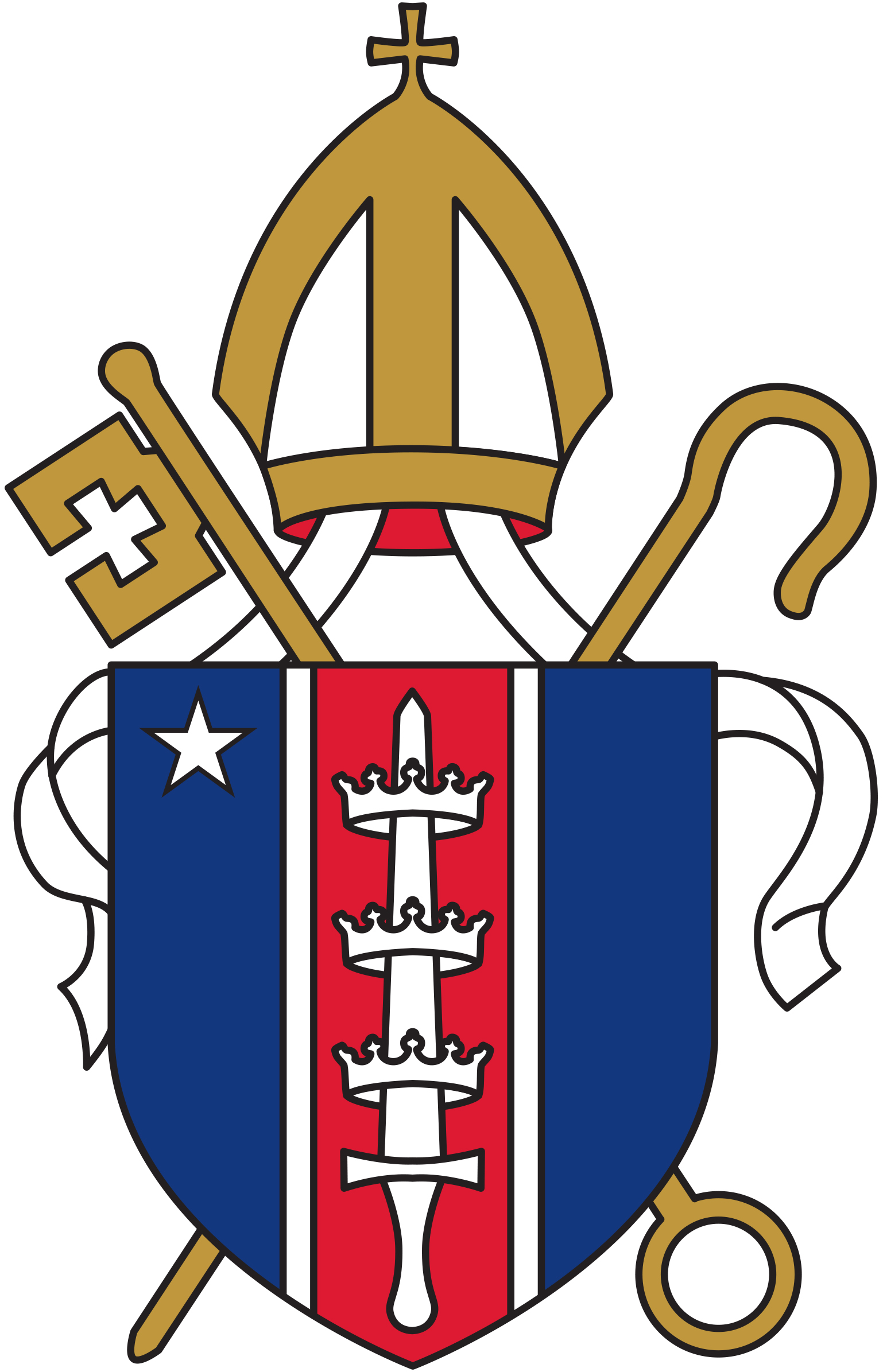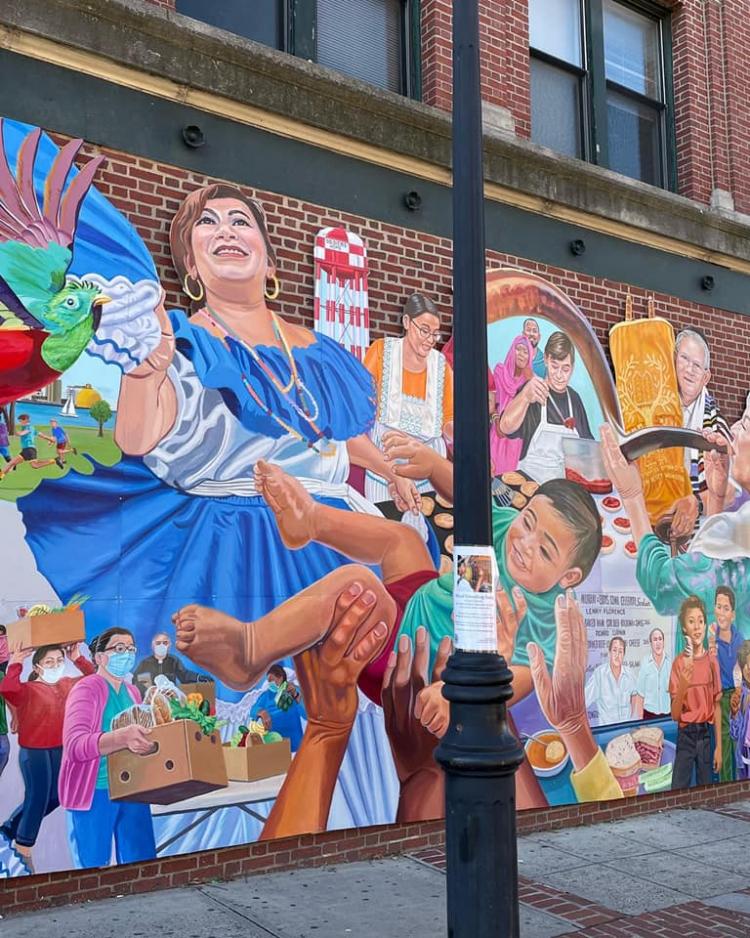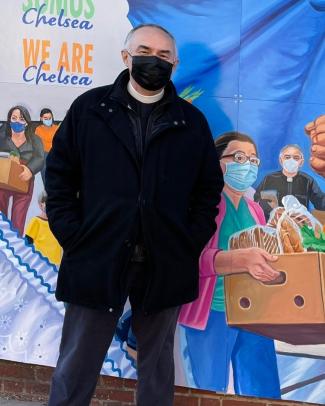What was formerly a blank brick wall on the Fifth Street side of 472 Broadway in Chelsea is now a colorful procession through the community's history.
There is the Revolutionary War's General Israel Putnam, wading into Chelsea Creek to call on the British to surrender. There are Winnisimmet women digging for mussels on that same creek's shores. And there's Fanny Fairweather, a woman enslaved by a prominent Chelsea family, the Carys. No one now living knows for sure what she looked like, but here we see her in her older years, smoking a pipe. We see two Polish-American girls who have strayed over from the Polaski festival in Chelsea Square. Armando Anthony "Chick" Correa is there, tickling the ivories in front of the Walnut Street Synagogue. Behind a woman making Salvadoran pupusas are members of the Chelsea Somali community in traditional clothing.
And there, just below the blue folds of the Salvadoran dancer Carmen Villalta's costume, we see the Rev. Edgar Gutierrez-Duarte, the vicar of St. Luke's-San Lucas Church. He's wearing his COVID mask and helping other members of the community distribute food to hungry neighbors.
They've all been brought together in "Chelsea Resilient: Call and Response Through the Ages," a new 80-foot mural by David Fichter that traces Chelsea's history across four centuries.
"I love the fact that all of us, whichever our ethnicity or race is, can find ourselves represented there, and not only on one particular side of the historical progression of the mural but all over it; from the beginnings of this community until the present time, it shows our diversity with the richness of colors and occupations that have left a mark in this community," Gutierrez-Duarte said by e-mail. "It also shows us in the best possible way: helping one another, doing what we do best, facing adversity in a collaborative way."
Chelsea, a gateway city of 40,000 just across the Mystic River from Boston, has been among the Massachusetts cities hardest hit by the pandemic and its economic after-effects. During the pandemic's peak, St. Luke's-San Lucas was distributing 2,000 boxes of food weekly through its community pantry program.
What does it feel like to encounter oneself in the march of history?
"I reacted with incredulity," Gutierrez-Duarte said.
"I just could not believe that the artist had decided to include me in the mural. All I did, and keep doing here, is to respond to the pain generated by the pandemic, trying to alleviate suffering in the best way that I can do, working with everyone else in our community. To get this kind of recognition is quite unbelievable. Another thought is my awareness that this is not about me. That image of me represents us, St. Luke's, our Episcopal Church and other people of faith who are such a vital part of this community and who work tirelessly for the well-being of our population," he said.
It seems that the public witness made by this new public art depicting Chelsea through the ages is very much about the here and now.
"The mural is very important to this community because it reflects the fact that our current response to the pandemic is not an isolated incident, but it is a pattern of community response that has characterized Chelsea throughout history," Gutierrez-Duarte said. "This is how Chelsea pulls together and is able to overcome all sorts of calamities that fall upon us. It is a celebration of the life and vibrance of this wonderful city."
--Tracy J. Sukraw
Learn more about the "Chelsea Resilient" mural project at www.chelseaprospers.org/chelsea-resilient.


